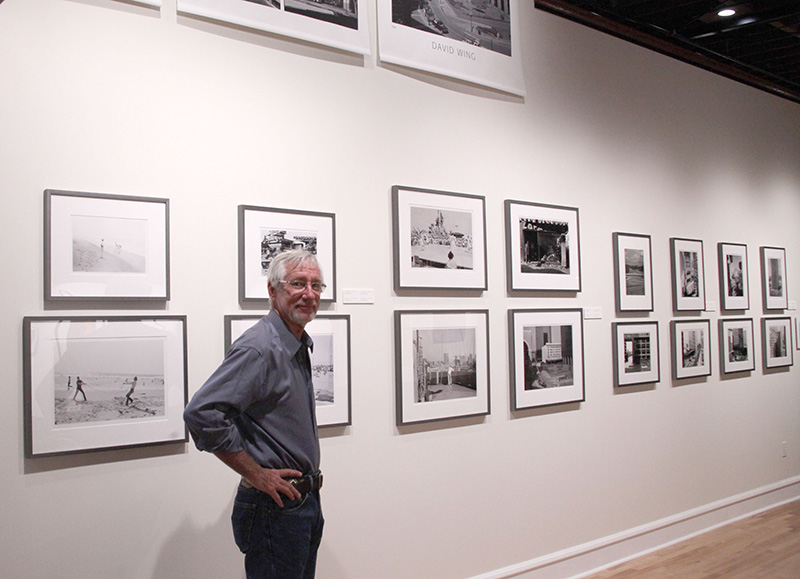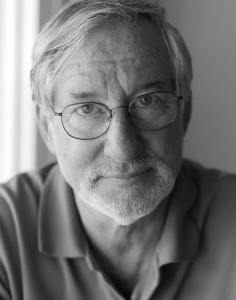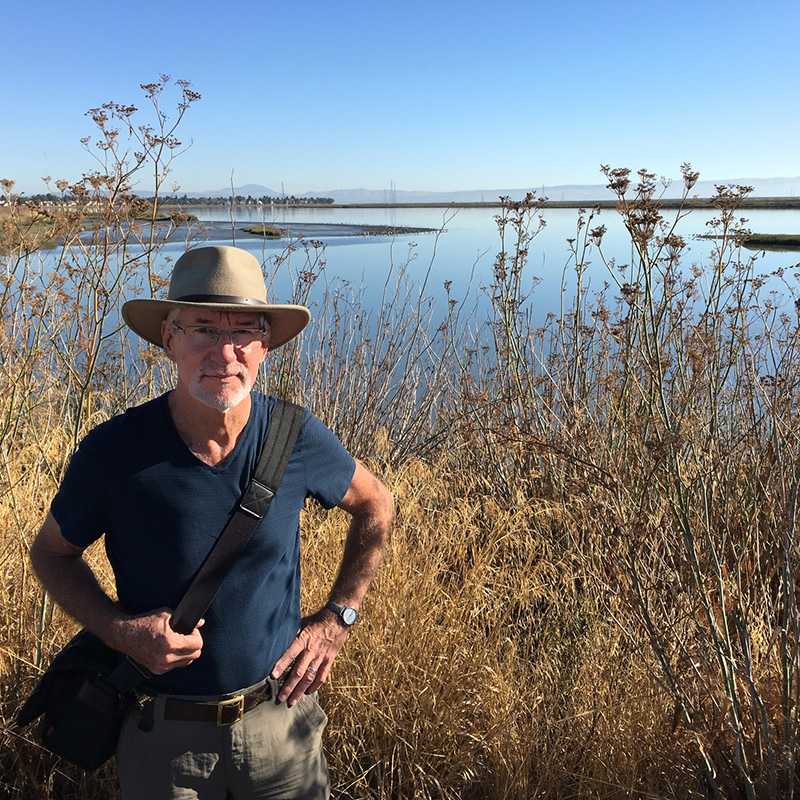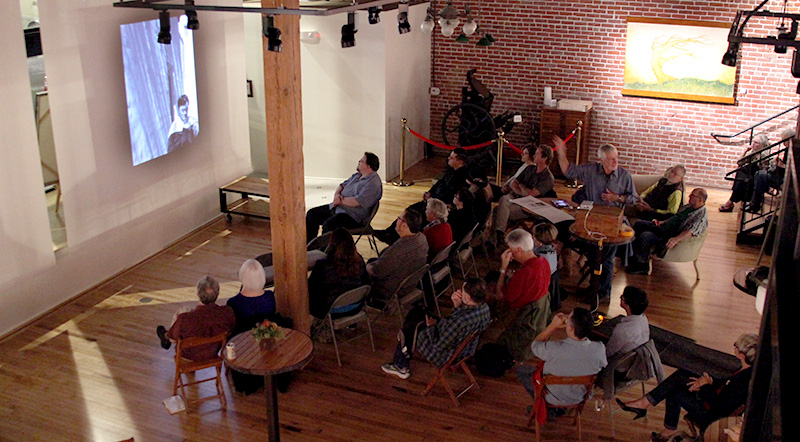Notions of an Observer

David Wing in front of Retrospective Show at Sparks Gallery

Photo Credit Bernd Reinhardt
San Diego photographer and professor, David Wing, has been capturing the life and landscape of the American West for the past 50 years. His illustrious career includes fellowships from the National Endowment for the Arts and the John Simon Guggenheim Memorial foundation. In addition, the Museum of Modern Art, New York, The San Francisco Museum of Modern Art, and the Getty Research Library have acquisitioned Wing’s photographs for their collections. David Wing’s San Diego Retrospective was exhibited at Sparks Gallery from October 2, 2015 – December 6, 2015.
Wing highlights his inspiration on subject matter, processes, and thematic values of his photographs.
Sparks Gallery Asks: Can you describe your creative process with photography?
Wing: I like to imagine that I am not from around here, that I have just survived a forced landing on this planet. Disoriented, I dust myself off and go out exploring – mapping and gathering data on the local landscape and life. I am working up a report which I hope will find its way back to my home world. Therefore, my “theme” is wide open, and new material is always around me. My pictures do not have a “style,” but I trust that they, in my own way, will describe the character of this place, this life, and if graceful, this explorer.
Sparks: Do you, or have you had a mentor?
Wing: Ben Lifson, one of photography’s best minds and souls, set me up for life as a photographer in 1971 in a graduate class. Robert Tschirgi, a unique neurophysiologist, shared his enormous curiosity, precise thinking, and his comprehensive view of the universe with me in 1968-69 when I TA’d for him, and further in 1972-73 when I assisted him at the UCSD School of Medicine.

Photo Credit Debra Avery
Sparks: What inspired you to become a photographer?
Wing: My mother’s father was a fine watercolorist. My father was an engineer. In school, I was interested in everything. Using a camera fits right into the middle of all those aspirations.
Sparks: Have you been influenced by any other photographers?
Wing: I have been out of school for 44 years, so I don’t use the word “influenced;” I prefer “inspired.”
There are a great many inspiring pictures in photography’s long tradition. I can’t name all my favorite names here, but I would certainly refer you to the wonderful concrete lyricism of Helen Levitt to start off a long and delectable list.
Sparks: You work in both color and black and white. Do you have a preference? And why?
Wing: For me, color is full of adverbs and adjectives. Jack Grapes, who teaches a rigorous writing course, charges his students $5.00 if they use an adverb. (The fines teach them to choose the right verb, so it will not need a modifier.) Monochrome photography is crisp, tight, poetic. Both forms are surely abstractions, but monochrome is a lovely reduction, without the color which can often take the photographer and the viewer on a side trip.

David Wing speaking at Sparks Gallery
Sparks: As a teacher of photography, what has been your advice to a young photographer?
Wing: I always quote Gary Winograd: “Good work takes great labor.”
Sparks: What is the difference between a K3 pigment print and a Silver Gelatin print?
Wing: The silver gelatin print is a darkroom print; in my case, made under the enlarger and tray-processed and treated with clearing agent and washed in an archival washer, then air-dried on screens.
The archival pigment prints are made via the Epson 4880 printer on Epson Exhibition Fiber paper with the Epson K3 inkset. The monochrome prints are produced primarily with the Photo Black, Light Black, and Light Light Black carbon-pigmented inks and a touch of magenta or cyan pigments for the print cast. The carbon pigments have a very long life.
Sparks: When did you start the collection of works for the exhibition at Sparks Gallery?
Wing: The installed prints are dated on the labels: 1976 through 1986, the most recent one in 1990.
David Wing’s current available works may be viewed at this page: https://sparksgallery.com/product-category/artist/david-wing

